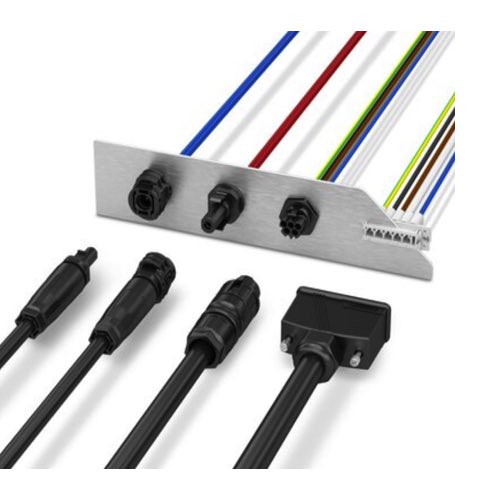Photovoltaic Connectors

Critical components in photovoltaic systems, connectors ensure that solar panels, inverters, and other system components are connected efficiently and securely. They offer energy-loss-minimizing, reliable connections when photovoltaic panels are generating their DC power. They couldn’t do this unless they were well designed to handle the demands of solar power. A well-designed connector is not the only renewable energy system component needing good design, but it is an essential one and should be considered a "best practice" example for the other components for which photovoltaic system designers and installers are responsible.
Connectors for solar systems, such as photovoltaic (PV) connectors, are designed for long-term performance. They have a sturdy, weatherproof construction that resists not only UV exposure but also all sorts of foul weather. Even so, they are easy to connect and disconnect owing to their secure, plug-and-socket design. Such connectors come with several options for terminations that are useful during installation. Some are crimp or compression terminals, with which you would use a pair of pliers or a special crimping tool. Others are screw terminals, which require only a screwdriver. PV connectors provide safe operation when connecting PV modules and other components in PV systems.
FAQs
What is the required rated current of solar connectors that connect to inverters in photovoltaic systems?
The required rated current of solar connectors that connect to inverters in photovoltaic systems typically ranges from 30 to 50 amps, depending on the specific system requirements and design.
What accessories are manufactured with specifications to work with photovoltaic connectors?
Accessories manufactured to work with photovoltaic connectors include sealing caps, locking clips, branch connectors, cable couplers, and crimping tools, all designed to ensure secure, reliable, and efficient connections in solar power systems.
Serial Communication Basics
In telecommunications, the process of sending data sequentially over a computer bus or communication cable is known as serial communication. Serial communication transmits data one bit at a time. Parallel communication transmits bits simultaneously over multiple communication lines in a single bus or cable. While it may seem that parallel communication would be the preferred method, this is not true in many situations.
Because of the increased complexity and data transmission, serial communication has faster speeds than parallel communication. The speed at which serial is communicated can be altered by adjusting what is known as the BOD rate, which simply increases the number of the bits that can be transmitted per second. This is one of the reasons serial communication methods have remained such a common method for basic communication in much of computer based hardware used today.
Some of the most common standards that have been created to take advantage of serial based communication in the industrial space would be RS 232 and RS 485. The earlier RS 232 standard was very common in computing in many different industrial, commercial and residential applications. It had lower transmission speeds, short maximum cable lengths and large voltage swings, making it useful only in certain situations. RS 485 is an improved standard that is still found in many of the same applications today. It resolved many of the issues the earlier RS 232 standard had by allowing longer cable lengths, higher transmission speeds and other improvements that increased its usability and performance.

